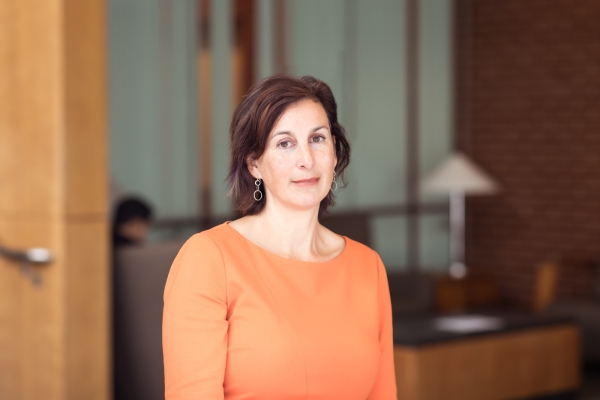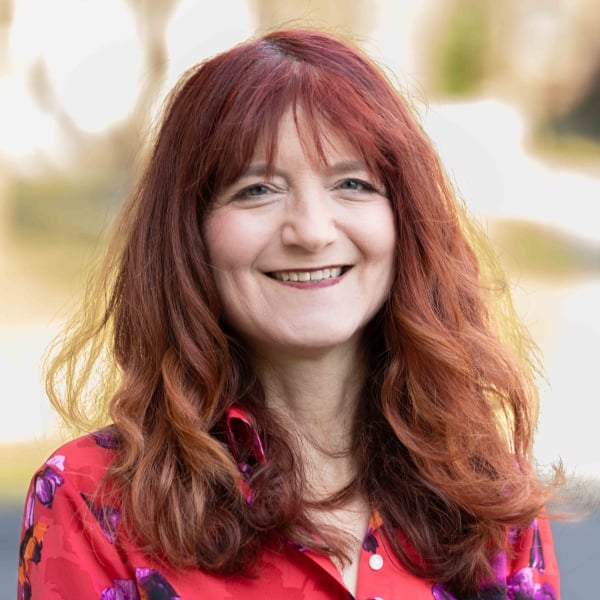You have /5 articles left.
Sign up for a free account or log in.
The world of academic innovation is a small and tight community. Two of my colleagues in the academic innovation network are Suzanne Dove, assistant vice president, strategy and innovation at Bentley University, and Patrice Torcivia Prusko, director, learning design, technology and media in the Teaching and Learning Lab at the Harvard Graduate School of Education.
Earlier this year, I had a Zoom conversation with Suzanne and Patrice about women in leadership roles in academic innovation. This Q&A is the follow-up to that conversation.
Q: For each of you, what do we mean when we talk about academic innovation? How do your current roles, and perhaps longer-term career trajectories and goals, relate to academic innovation?
Suzanne: I was fortunate to spend the first few years of my university career in several different research, outreach, program development and teaching roles. Each of the groups I worked with brought tremendous value to the academic enterprise, but I was often surprised by how little they seemed to know about one another. I remember very clearly attending a conference on big ideas at my university (a large public institution), where many people pointed out how hard it was to make progress on these big ideas when our university was siloed and sometimes balkanized. One of the conference speakers made the point that we need more “boundary spanners” in higher education and I wrote a challenge to myself in my conference notebook: “I want to become a boundary spanner!”

To me, that is one of the core competencies of an academic innovator. It is the ability to see the incredible value our different academic disciplines, as well as functional areas, bring to the table. And getting really good at finding ways to bring together those different perspectives and talents, with the goal not only to collaborate but also to generate value for the university. And value generation can be defined in different ways, of course. It’s interesting to think about how academic innovators generate value. And that means different things for different institutions.
Patrice: Many of us entered this field with a strong desire to have an impact and make a difference. We saw academic innovation as a way to reimagine the learner experience and increase global access to education. Those of us in academic innovation roles have had opportunities to be creative, fail fast and believe in the possible. For me, academic innovation means letting go of some of our long-held beliefs around what education looks like—for example, sitting at a desk, fall and spring semesters, and the credit hour. When I talk about academic innovation, I remind people of three things:

It doesn’t need to be big, shiny and expensive. It can be small and have a broad impact within your context. Let yourself be creative, and have fun. It doesn’t need to be scary. As futurist Amy Webb says, steer into the slide.
Q: What leadership development programs and professional communities have each of you participated in?
Suzanne: Throughout my career, I have been fortunate to work for leaders who invest in their staff (in fact, this is something I advise everyone to look for as they explore a new professional opportunity: Try to find out what opportunities will I have for professional development or stretch assignments? Access to coaching or mentorship?). As far as formal leadership development programs, I am an alumna of the Big 10 Academic Alliance’s Academic Leadership Program, to which I was nominated while assistant dean at the University of Wisconsin at Madison. It was a wonderful way to gain an understanding of top issues and the incredibly challenging trade-offs facing campus leaders.
I also found that it helped me develop empathy and humility that has served me well as an academic innovator. I am proud to be a member of UPCEA, a very welcoming association that attracts a lot of folks whose roles are related to innovation and transformation in postsecondary institutions. It’s also helpful to look for ways to formalize or codify our work as academic innovators. In fact, with all the work happening on alternative credentials, is there an opportunity to create something in the academic innovation space? Recently, I formalized some of my academic innovation practices by earning a credential in change management from ProSci. Consider demonstrating your own commitment to lifelong learning by reflecting on what you’d like to learn and finding a way to show that you’ve learned it.
Universities often form consortia along regional or disciplinary groupings; there are plenty of professional associations to explore. Ask your mentors and colleagues for recommendations and explore from there. If you do not have a budget for an in-person conference, check out webinars or virtual convenings. The pandemic really increased the number of opportunities to build and nurture a professional network online. The HAIL network is a wonderful example, and I have discovered some of my most treasured colleagues within HAIL.
Patrice: I’ve been fortunate to be well supported in my career and have had amazing mentors, coaches and colleagues who have provided invaluable guidance and opportunities. During my time at Cornell University, I was nominated to attend the MOR Leaders program and IELOL, and more recently, I was nominated to attend the HERS Leadership Institute. These programs have had a lasting impact on my leadership style, and equally as important, the value of the alumni networks cannot be overstated. I would strongly suggest talking to alumni as you explore different programs and spending some time reflecting on your goals and what you want to gain out of the experience. In addition to professional networks, spend time building your network and forming your personal “Board of Directors.” Find those authentic relationships, those people who will have your back and truly listen. I have an incredible support network, and we’ve guided one another on salary negotiations, career transitions and challenges at work, and have been a safe place to land during the difficult last few years. It is through the HAIL network I’ve met some of my closest colleagues and friends (a few of which I am co-writing this article [with]!).
Q: As there do not seem to be any leadership institutes, academies or organizations dedicated specifically to developing and supporting women in the field of academic innovation, what sort of opportunities would each of you like to see? What might be the next steps towards creating leadership training and support opportunities for women in academic innovation?
Suzanne: Yes, I wonder if there is a gap here. If I were to help design such a program, I would include a component on “claiming your innovation voice and your seat at the table.” I would offer opportunities to role-play how to frame academic innovation opportunities in language that resonates with executive leaders and with people from different parts of the university. I have found that this ability is critical to finding sponsors.
And speaking of sponsors, I think such a training program should emphasize the importance of sponsorship, not just mentorship. Research shows that sponsorship is an important ingredient for women to advance in their careers (Chow 2021). What is sponsorship? Briefly, it’s when someone in a position of influence or power advocates externally for an individual (protégé), speaking to their capability and readiness for greater responsibility including a stretch assignment or a leadership role. Whereas mentorship involves support directed at the individual, sponsorship happens when the individual is not in the room.
But let’s not shine the spotlight on what women need to do differently. What if we instead help men in higher education as they seek to serve as effective allies and sponsors? What if we publicize data showing how the pandemic-related care-giving crisis impacted the academic career trajectories of female- vs. male-identifying faculty and staff? How has that historic period affected the pipeline of women who are looking to step into a role as an academic leader and an academic innovator in particular?
Patrice: We can’t talk about women in the field of academic innovation without naming the current state of women in leadership roles in HE. Women have long navigated a labyrinth in their journey to the top leadership roles, such as university presidents and the C-suite. It is a complex pathway full of obstacles and systematic barriers that have been in place for years. Twenty twenty-three looked like the year women finally made it, and we allowed ourselves to celebrate the fact that six out of eight Ivy League schools had a woman president, and between 2021 and 2023, the total number of female college presidents rose from 22 percent to 30 percent. In 2024, we’ve watched these numbers steadily decrease as women step down from their roles. Frequently, women in leadership roles tend to be the first woman in that role or the only woman on a leadership team.
If we narrow that to academic innovation, a field already more highly populated by men, it becomes much harder to navigate. I recently wrote an article on the need for a feminist leadership model in higher ed. The majority of leadership programs are based on theories developed by cis white men. I would like to see programs that use a model of critical self-reflection and are designed around theories that prioritize justice, letting go of power and creating a culture built on collaboration and an ethic of care. I would like to design a conceptual framework that leads to long-term, systemic change.








